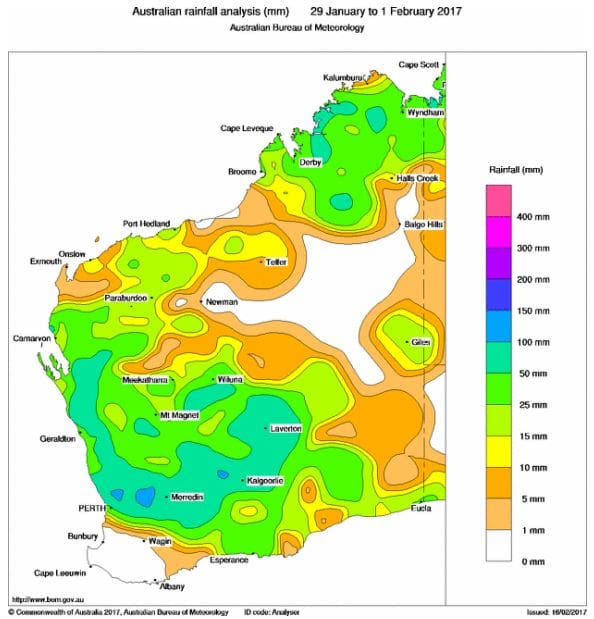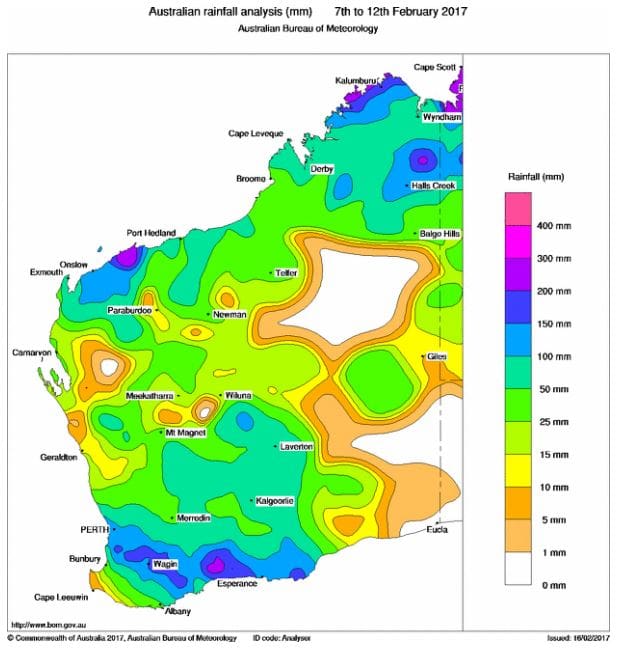WHILE south-eastern Australia sweltered through record heatwaves over summer, Western Australia recorded a cool, wet start to the year with widespread flooding across the south-west.
Reviewing WA’s weather conditions over summer, the Bureau of Meteorology said the heavy rainfall and cool conditions occurred at the end of January, and again in early/mid-February.
A cloudband over south-west WA from the end of January to the start of February, associated with a tropical low near the west Pilbara coast, brought significant rainfall to northern and central areas of the South West Land Division, including parts of the Central West, Central Wheat Belt, and Lower West including Perth.
Daily falls between 50 millimetres and 100mm were recorded between January 29 and 31, with the highest daily total being 140.2 mm at Yorkrakine in the Central Wheat Belt.
Four-day rainfall totals from January 29 to February 1 were between 150mm and 200mm in the southwest Central Wheat Belt, with Yorkrakine recording the highest official total of 197.5mm.
Frenches – an unofficial station east of Toodyay – recorded a higher total of 217.2mm over the same period.
A number of sites registered record high January daily and monthly rainfall totals as a result of the event.
The Bureau said a second tropical low formed to the north of Western Australia early in February.
It moved across the Pilbara coast on February 8, bringing a record-breaking February daily rainfall recording of 210.6mm at Karratha Aerodrome—the second highest amount for any month behind 212.4mm on January 10, 2006.
A cloudband associated with this tropical low developed over south-west Western Australia and brought widespread rainfall to the region.
Daily totals over 50mm were reported from February 8 to 11, whilst at the peak of the event on a number of sites in the Lower West recorded between 100mm and 150mm.
Many sites recorded their highest February daily rainfall during the event.
February rainfall for the South West Land Division ranks as the second wettest February since comparable records commenced in 1900, only behind February 1955.
Many sites in the south-west also recorded their lowest February maximum temperature on record on February 9 or 10.
The Bureau’s Special Climate Statement on heavy rainfall and flooding in southwest Western Australia: http://www.bom.gov.au/climate/current/statements/scs60.pdf
Source: BOM



HAVE YOUR SAY